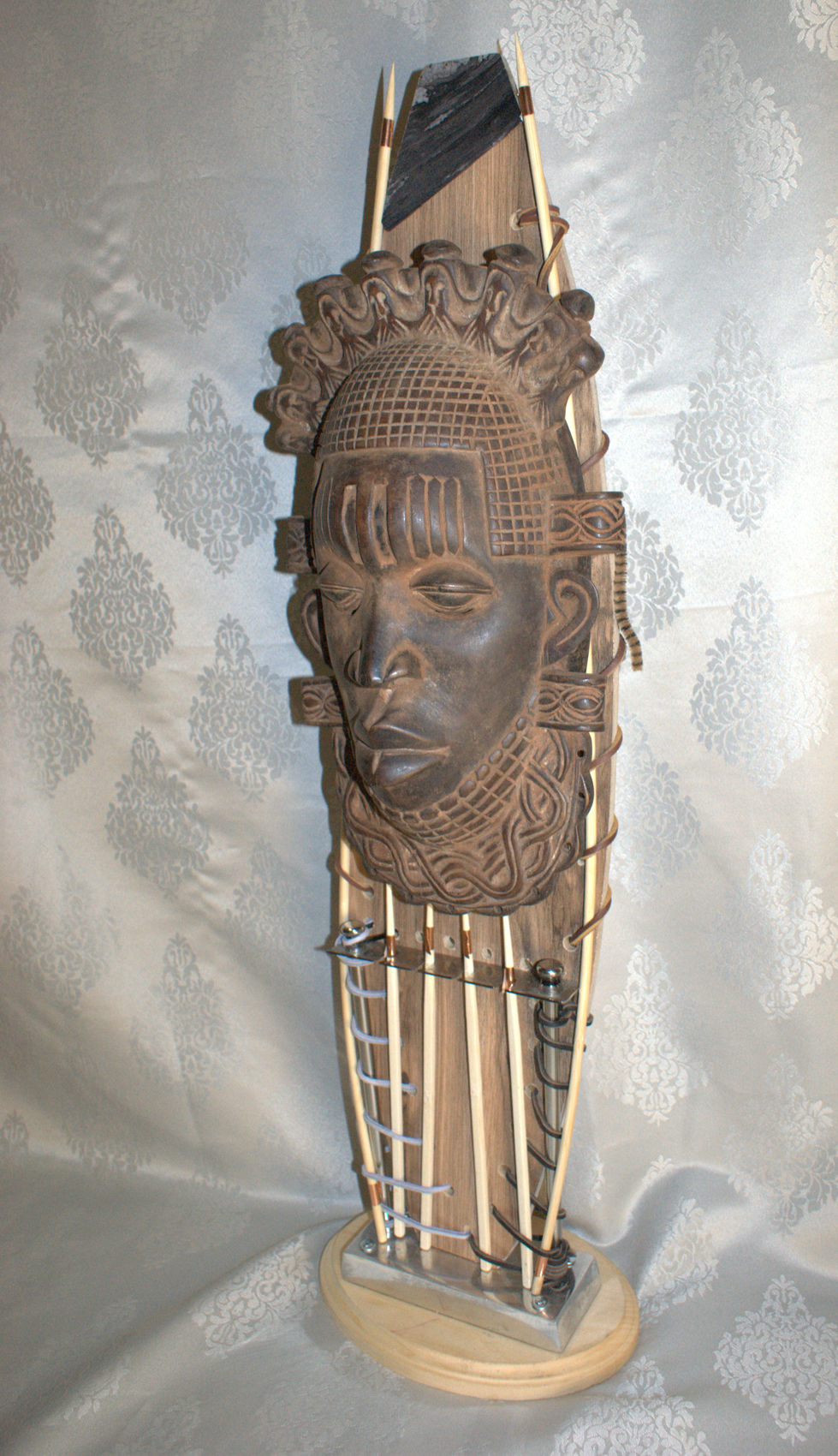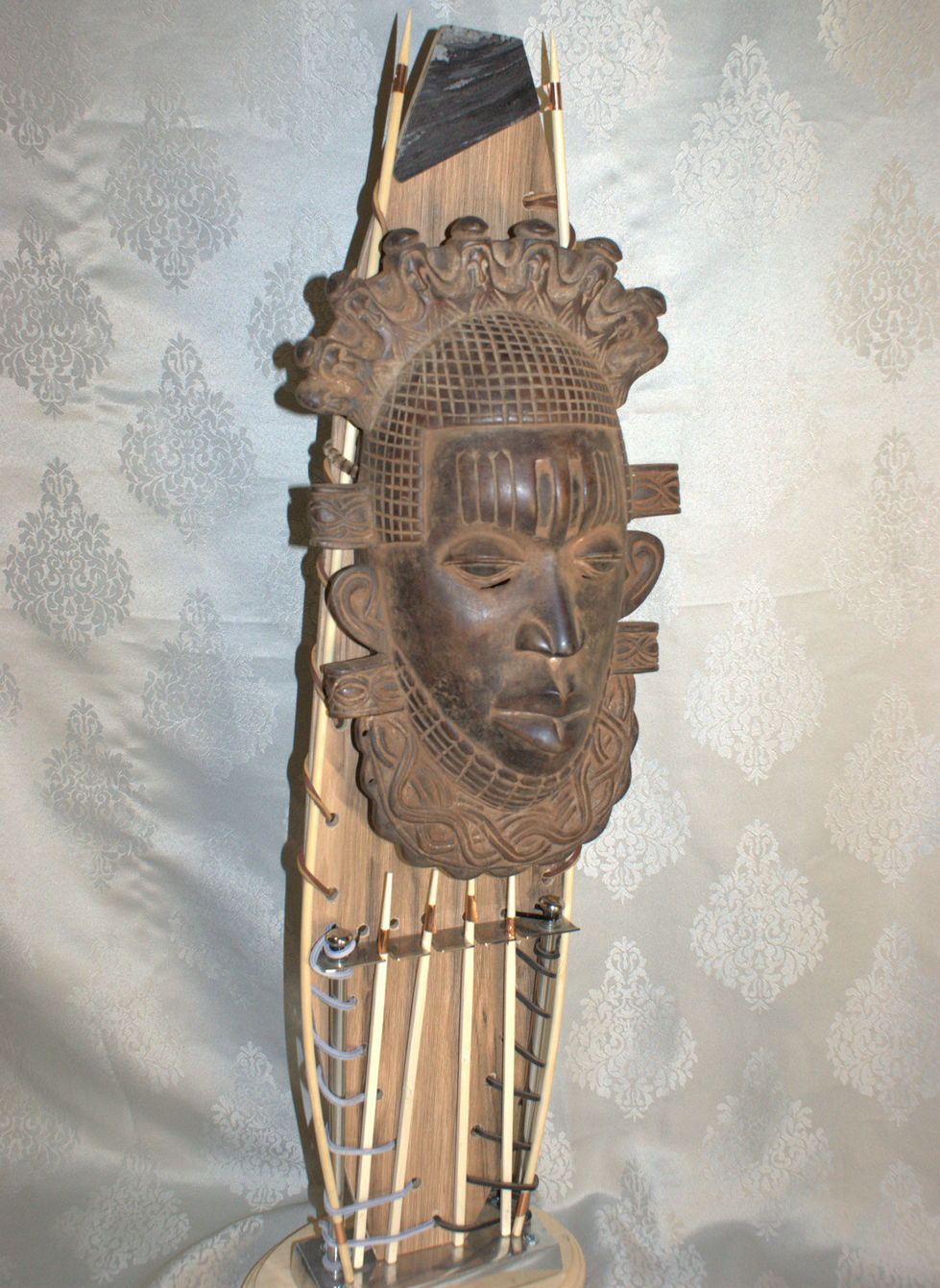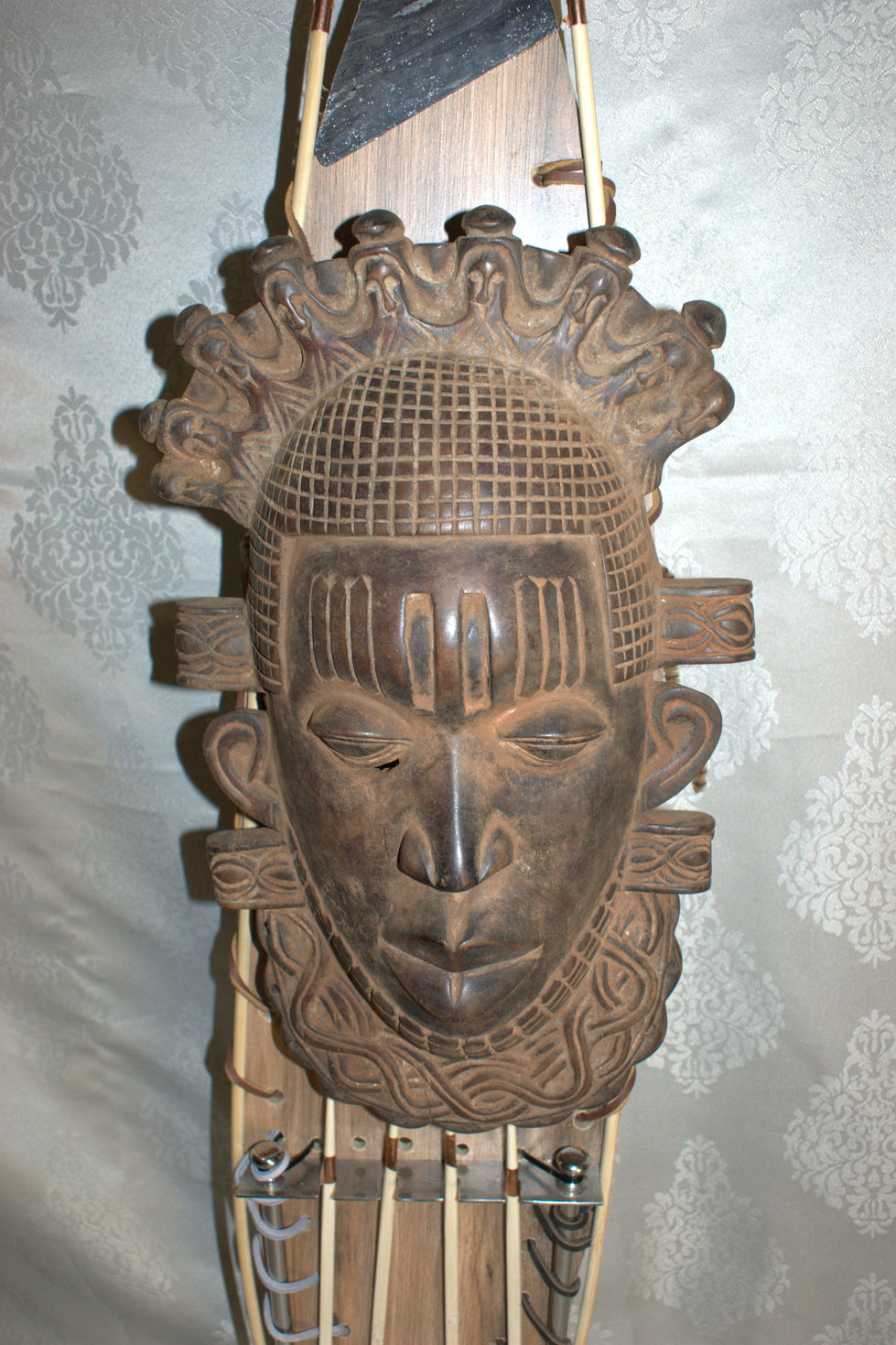W🌍RLD HISTORY
Create Your First Project
Start adding your projects to your portfolio. Click on "Manage Projects" to get started
Queen Mother Pendant Mask:
Project type
Mask
This ivory pendant mask, with its near-identical twin in the British Museum, speaks volumes about the enduring legacy of the Benin Kingdom. Even though depictions of women were uncommon in Benin's royal art, these two masks have become powerful symbols of a dynasty that continues to this day. Crafted in the early sixteenth century, this particular mask is believed to have been commissioned by Oba Esigie to honor his mother, Idia. It's likely the Oba wore it during ceremonies commemorating her, and even now, such pendants are worn in annual rites of spiritual renewal.
In Benin culture, ivory holds a special connection to the color white, symbolizing ritual purity and its association with Olokun, the god of the sea. Olokun, the source of great wealth and fertility, is seen as the spiritual counterpart to the Oba. Ivory, being white and a major trade commodity that attracted the wealth-bringing Portuguese, is central to the symbolic world surrounding both Olokun and the Oba.
The mask itself is a refined and idealized portrayal, featuring softly sculpted features, inlaid metal details, carved scarification marks on the forehead, and bands of coral beads beneath the chin. The openwork tiara and collar are adorned with stylized mudfish and the bearded faces of the Portuguese. Mudfish, living both on land and in water, represent the Oba's dual nature – both human and divine. The Portuguese, arriving from across the sea, were viewed as beings from the spirit realm who brought prosperity and power to the Oba.
The history of Benin's court art is a testament to resilience. Originating as a centralized Edo-speaking city-state around 1300, Benin established a divinely sanctioned royal dynasty with the help of neighboring Ife. The Oba held the dual role of chief priest and ruler. The fifteenth century saw the rise of Benin's military power and the fortification of its capital under Oba Ewuare. Simultaneously, Portuguese traders sought exclusive commercial ties, exchanging imported metals for Benin's pepper, textiles, and ivory. This influx of brass fueled a creative explosion in court art, resulting in ancestral portraits and decorative plaques. Even early on, European collectors commissioned exquisite ivory pieces from Edo carvers.
For nearly five centuries, Benin's rulers maintained their autonomy in dealings with European powers, carefully managing their involvement in the Atlantic slave trade. However, the eighteenth century brought instability and increased reliance on firearms. The nineteenth century saw further challenges, including internal disputes and the growing influence of British colonial ambitions.
The British invasion of Benin City in 1897 led to the exile of Oba Ovonramwen and the plundering of the palace. This brutal event dispersed countless Benin artifacts, decoupling them from their original ritual contexts. Many ended up in Western museums and private collections. Despite this tragic loss, the legacy of Benin's art continued to inspire, influencing Black intellectuals and artists. While their placement in ethnographic museums reflected colonial biases, their aesthetic power was undeniable.
Beginning in 1950, some Benin works were transferred back to Nigeria. With the nation's independence in 1960, Benin City became the capital of Edo State. Today, significant examples of this artistic tradition are held in institutions like the Metropolitan Museum of Art, thanks to individuals who acquired them on the international market. The current Oba, Ewuare II, while recognizing the global ambassadorial role of these works, prioritizes the creation of a new museum in Benin City, designed by David Adjaye. This initiative aims to provide a space for understanding and reflecting on the enduring significance of this living tradition at its source and to foster international collaboration.







